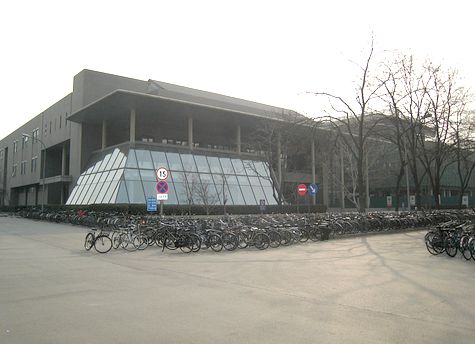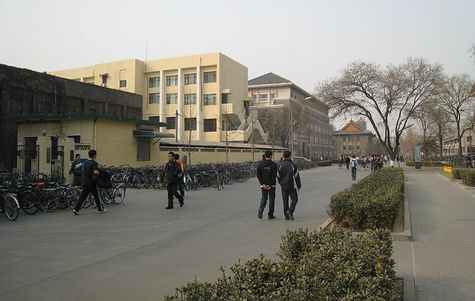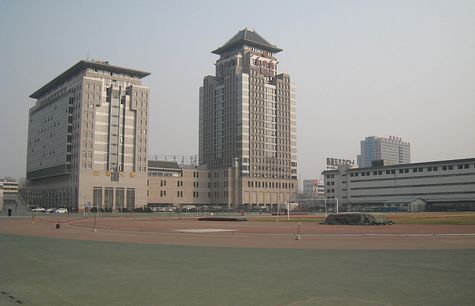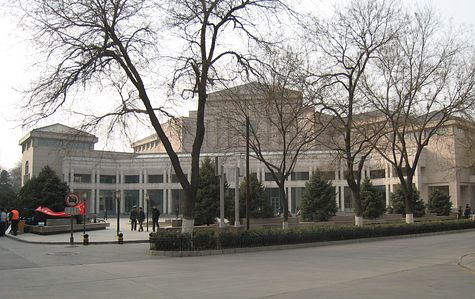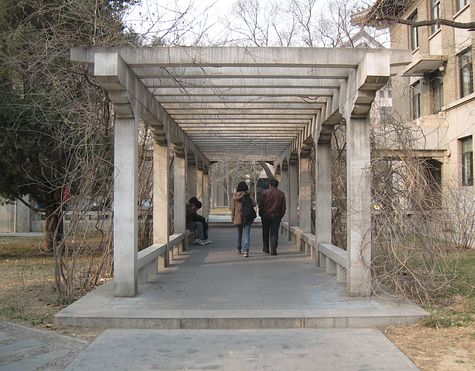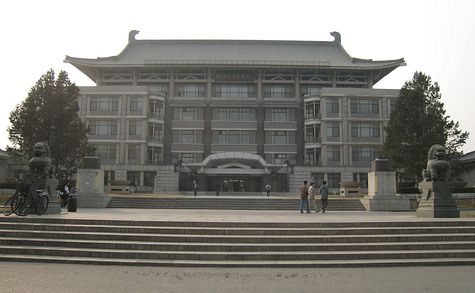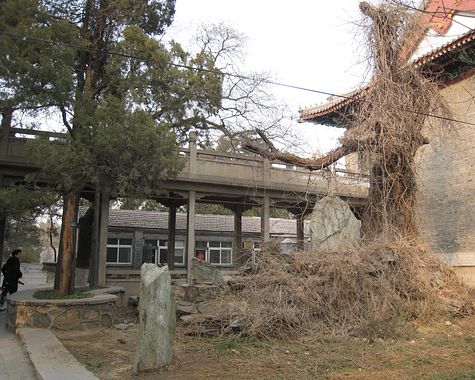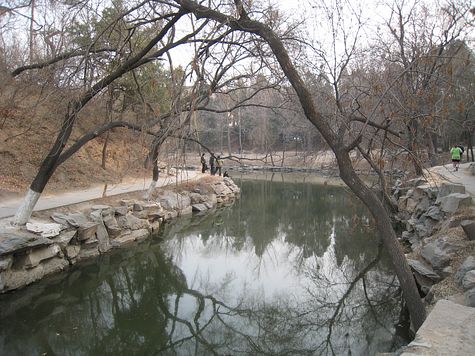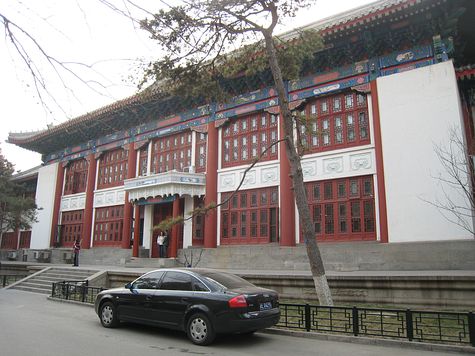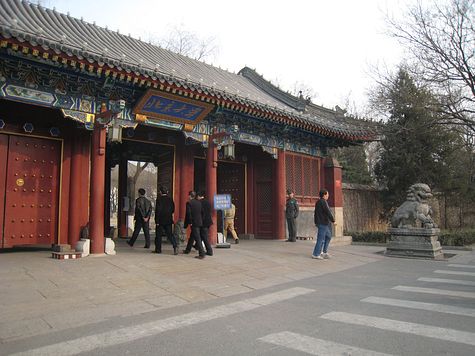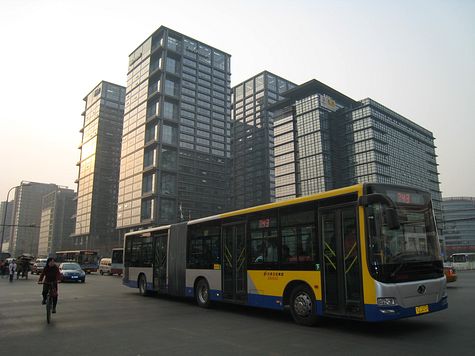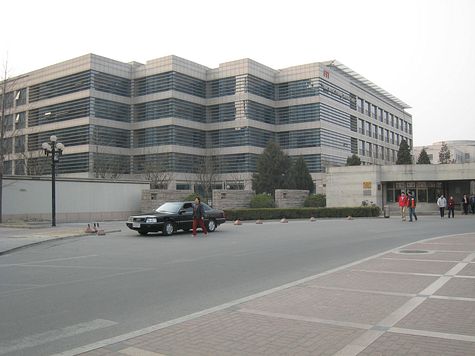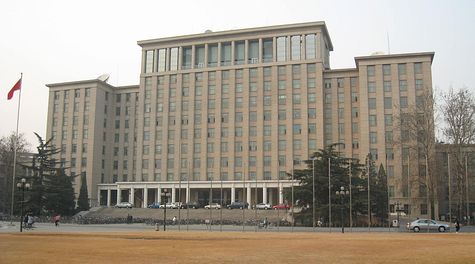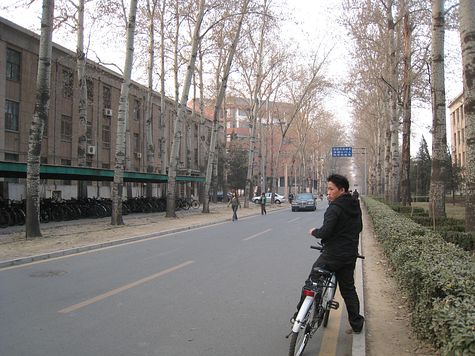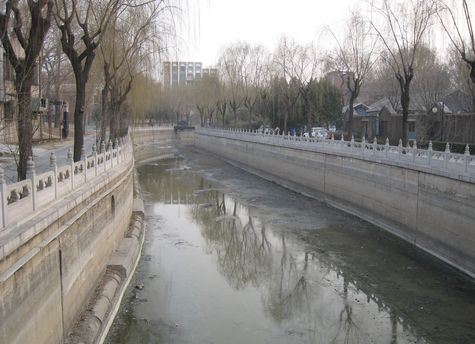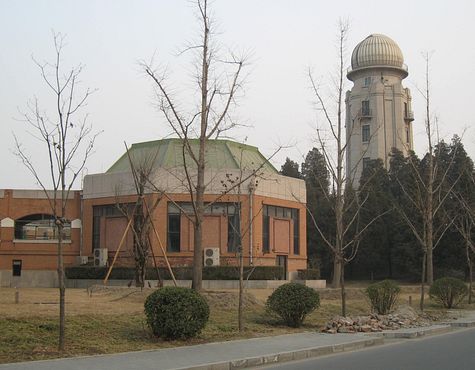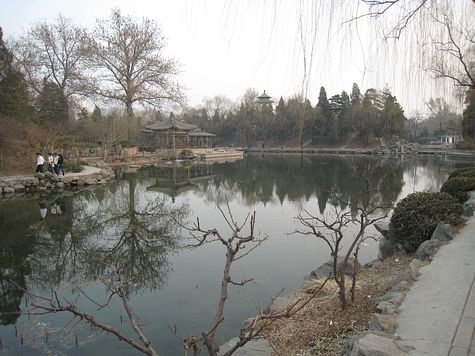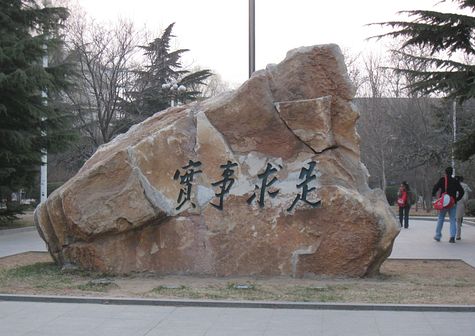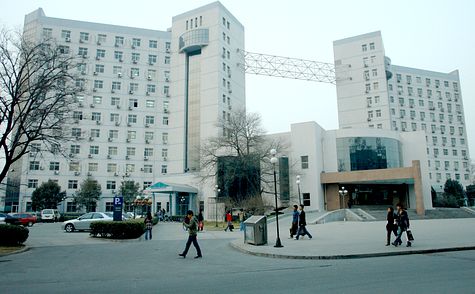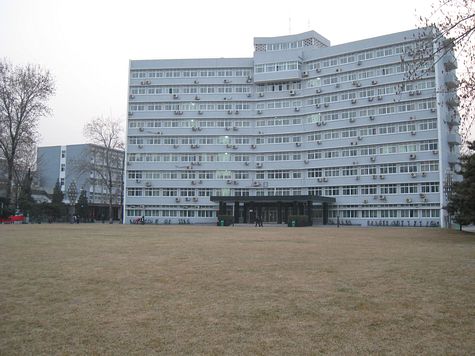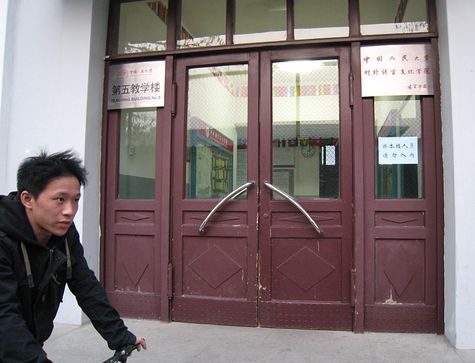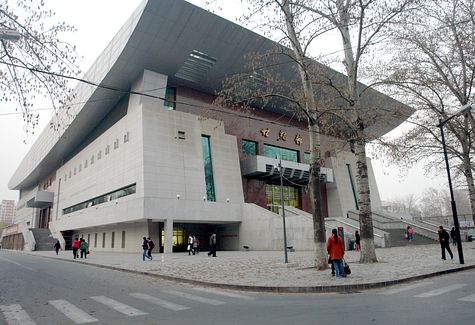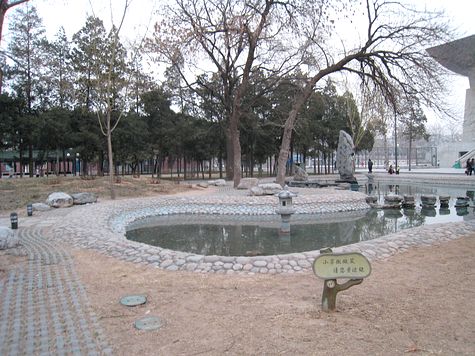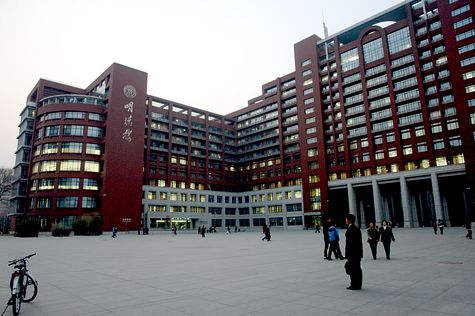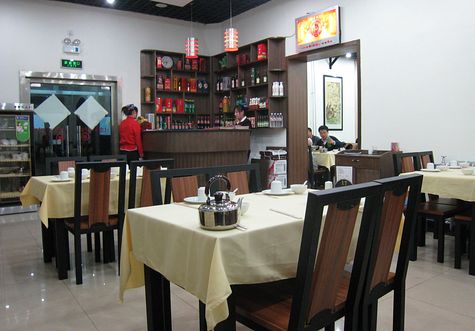After we had ridden about 20 minutes, the crank pin on Eric’s bike fell off. He walked the bike some long blocks down the wide boulevards, and then took us down a side street. On almost any small street, he said, we would easily find a bike mechanic.
Eric only paid a few cents for the repair. Remounting the bike and riding a block, the crank fell off again. We returned to the same mechanic, who hammered harder. With the bike repaired, we then set out to see the first campus.
Peking University
From the Zhongguancun part of the Haidian District, we had biked north and then east. To cross over the divided road from the east side of the street, we found a pedestrian overpass. We entered through the east gate of Peking University.
Peking University has been described as the “Harvard of China“. In the southeast part of the campus, the buildings are relatively modern.
The number of parked bicycles seemed relatively large in comparison to the number of students walking around. Class was in session.
Inside the campus loop, the athletic field is at the south edge of campus.
We watched a sports team training, shuffling left and then right. Training exercises seem much the same around the world.
Back north, and then west, this grand building opened onto a plaza.
Farther north seemed to have older, more human-scale buildings. This covered walkway beside a low-rise building welcomes pedestrians.
Near the centre campus, one building was a cross between modern architecture and traditional Chinese features.
Swinging around a circular loop, we waited while busloads of tourists took their photographs on the steps in front of the main building.
Back into the campus were some older buildings, and a garden with rock monuments and mossy trees.
Beyond the buildings in the north campus, a path led down to WeiMing Lake.
It’s likely that many scholars have come by the lake shore to think.
In the distance, construction cranes remind the visitor that Beijing is a booming city.
The lake takes some turns in its course, so it’s always possible to find a secluded spot.
Across the lake is a traditional Chinese pagoda.
On the edge of Weiming Lake is the David Packard Pavilion, presented to Peking University at its 100th anniversary in 1998 for use as an International Faculty Residence.
Walking south, pedestrians would ascend stone steps to the campus. On bikes, we pedalled up the incline to the side.
The low-rise classrooms in this part of campus were more traditional in architecture, and seem well-maintained.
A bridge spanned the water near the northwest gate.
We exited by the northwest gate to check out the view, and then biked back into the campus to cross to the other side.
Following an eastbound route in the north campus, we saw smaller and older buildings. Two columns marked the entry into an enclave.
These buildings may have been residences at one time. They’re now offices.
On bike, the campus was large. On foot, the tour would have been exhausting. We exited by the east gate where we had entered, and back onto the major road.
Tsinghua University
Eric didn’t exactly know where Tsinghua University is located. He usually takes taxis, and the drivers go point to point. We biked east and then north. Some office towers had the logos of high-tech companies familiar to the west. Tsinghua University is known as the “M.I.T. of China“.
We found a traffic circle at the entrance to Tsinghua University. We later deduced it was the south east gate. The building immediately to the northeast looked modern.
On the northwest side of the gate was another modern building.
Through the gate, we biked north. This grand building had signage only in Chinese script.
As the next building north, the Tsinghua School of Economics and Management had its sign prominently displayed in English.
At the end of the road going north, the main building of Tsinghua had signs for traditional departments of engineering.
As we biked west and north, we found many tree-lined streets with low rise buildings.
It was around 5:00 p.m., and we noticed the number of students headed northbound on bikes increasing.
A few minutes later, we recognized that we were in rush hour — with bicycles the dominant choice for transportation. Even with heavy traffic, there were still lots of bikes lined up as parked.
We chose a route with less traffic by riding west. This took us across a bridge over a canal.
On the west side of the canal, a park area had a walk with benches underneath.
We found the sports fields, where students were training.
On the west side of campus was a mix of new and old buildings. We saw one shaped as an observatory might, but it wasn’t very high. Bejing is prairie-flat, though.
Crossing another bridge on the canal, we decided that we should speed up our tour before the sun had totally set.
Tsinghua University also has a lake. We biked south on the western shore a bit, and then realized that it would take more time that we had available to go around it.
We left the Tsinghua University campus by the west gate, and continued bicycling south. On the way, we passed by the east gate of Peking University, where we had started sightseeing. We had biked all of the way around Tsinghua University on major streets, when it’s literally “across the street” from Peking University. The amount of time we spent on the bikes illustrates that “across the street” is a relative term. The distance really isn’t walkable.
Renmin University
Riding south, and then west, we wended our way back to the main gate on the east side of Renmin University. Eric is studying Mandarin there, as did Adam for two years. Renmin University of China may not be well known to westerners, but it’s ranked as a top Chinese school for economics and law.
Directly through the gate is the boulder that appears as the standard image for the university.
In the park behind is a pile of igneous rock, forming a natural sculpture.
The campus at Renmin University is more compact than the others we visited that day. The function of the girders spanning two towers of this building is unclear.
Most buildings, as with these classrooms, seemed to favour function over aesthetics.
Newer buildings have had more thought put into their design.
We biked by RenDa Teaching Building No. 5, where Eric has had some classes.
The Renmin University stadium looks relatively new, and is Olympic scale.
The sports field behind the stadium was quieter as the sun was setting.
The park was modest, with a small pavilion.
Renmin University has a pond, not a lake.
The west edge of the campus is abuts to the city, with apartment towers across the street.
The Mingde Building Complex is a mammoth structure that includes the School of Business, and the Law School. This building opened in 2005, reflecting China’s growing investment in higher education.
We ended the day at a restaurant on campus, near Eric’s dormitory.
The restaurant had been recently renovated, so Eric hadn’t eaten there recently. We may not have chosen the best dishes for their specialties.
It had taken us nearly five hours to bike to and around three university campuses in Beijing. We didn’t dismount for more than 10 minutes at any time, and we hadn’t seen every part of every campus. I’m more accustomed to cities with neighbourhoods that are walking scale. Beijing is the capital of China, and size appears to be one of the dimensions on which the country wants to make an impression



